#Populus tremuloides
Explore tagged Tumblr posts
Text
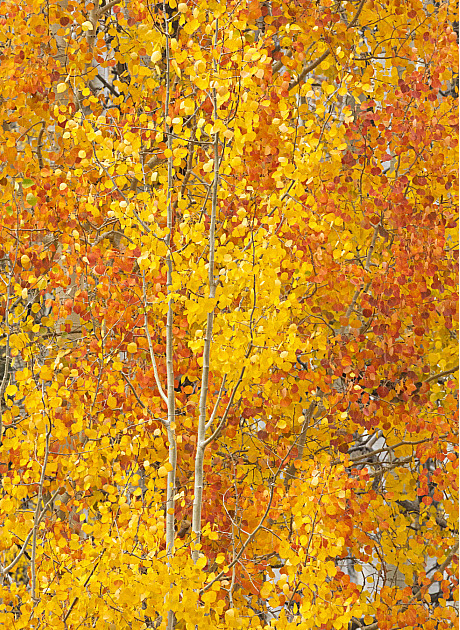
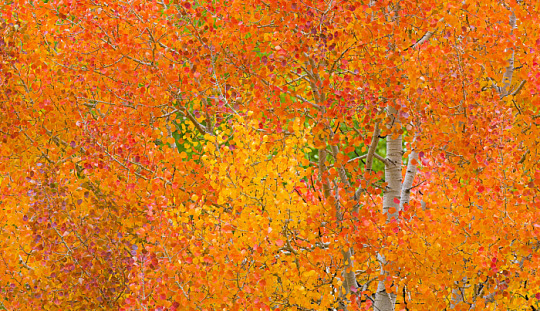
Quaking Aspen (Populus tremuloides)
Photos by Yva Momatiuk and John Eastcott
#aspen#quaking aspen#populus#populus tremuloides#trees#woods#forest#orange#orange leaves#autumn#autumn colors#fall#fall colors#fall leaves#autumn leaves#nature
174 notes
·
View notes
Text

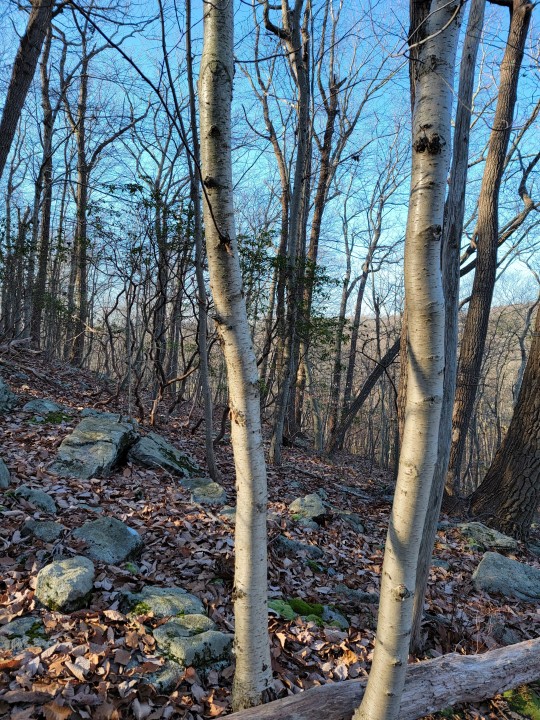
Quaking Aspen - Populus tremuloides
Today I want to bring up a charismatic favorite: the Quaking Aspen. Like all populus species, it's a fast growing, clonal colony forming, northern extreme and mountain loving tree (just like its Eurasian sister species: A. tremula) with an incredibly wide range of distribution. In addition to all those interesting qualities, the oldest known organism is presumed to be a Quaking Aspen colony (Pando, in Utah)
General identification before I can talk about the more interesting bits, Aspens are best known for their yellow autumn leaves and smooth white bark with dark knots, they can grow as large as 60' but depending on their environment can be stunted to around 5-20' (think of krummholz). Leaves of this species appear slightly heart shaped and retain the same sheen on both sides (image 1). Plants are unisexual meaning individuals either have male or female flowers, interestingly enough this is a good method to distinguish where one colony begins and ends by looking at the color of the branches in spring (see image from Colorado below, note trees with light green and those without). Emerging catkins are white at first which become green and longer as the season changes, male catkins having slightly longer stamen but female fruiting catkins ultimately growing longest at 10 cm. Seeds are small capsules with silky hairs to assist in wind dispersion, these trees are ruderal so they produce around 1.6 Million a season with many unable to germinate. Seedlings often need consistent moisture and full sun to even germinate, most of the seeds growth goes to root structure the first year.

The name Quaking Aspen (or trembling per the Latin) refers to the extremely mobile habit of the leaf. Leaves are connected to flexible petioles (stems) which flip around in the slightest breeze. Environmentally speaking, I was once told that leaves have chlorophyll on both sides however this stem could also be a biological strategy to cope with harsh wind conditions in mountainous environments, I didn't encounter any recent research verifying this though. Interestingly enough, given the harsh nature of which this tree thrives, apparently, there is chlorophyll in its trunk, allowing extra energy to enter the tree when it's leaves are gone.
Quaking Aspen is an early succession species, able to reestablish/colonize a site after a fire or other major disturbance. Many of Upstate New York's famous Aspen forests are actually a result of logging and fires in the early 1900s rather than a typical forest compostion. Establishment is different depending on opportunity, in the west its often long lived clonal roots systems, in the high arctic its often through wind blown seed, in the east its generally short lived clones out-competed by hardwood/conifer forest after a century, and in its furthest southeastern range I typically only encounter individuals on rocky outcrops or former fields.
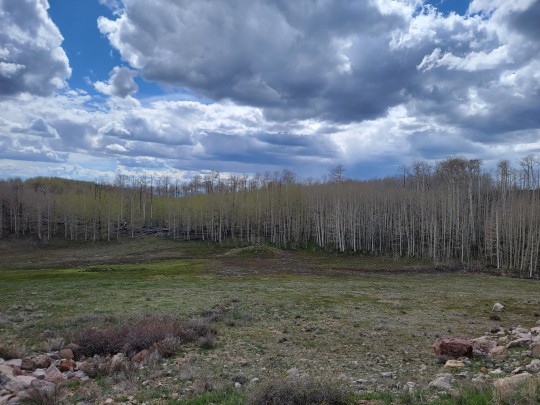
Above ground trees usually live less than a century, in the east maybe 50-80 years given our moisture, out west individual trunks can live two centuries. It's common to find dense forests with even-age trees since clonal root structures re-emerge together (Image above from Bluebell Knoll Mountain in Utah). Its also thought that the root system can live for two millenia or longer, Pando being an example of extreme longevity (I mean 40,000 years would survive an ice age, even in Utah there would be mountain glaciation, thats quite spectacular if true). Ironically, one of the best survival tools in the Aspen's playback is fire recovery, otherwise it will get out-competed/shaded pretty fast (see the context in image 2, that NJ forest used to have lots of aspen).
All this in mind its good to point out that Aspen's early successional habit makes it great for ecological restoration. It's common to find them as the first pioneers on former mines or superfund sites (aspen grove below from Palmerton gap, Pennsylvania). Unfortunately one of the negative side affects is that populus species often bring up a lot of heavy metals in their leaves and wood meaning they can re-contaminate through their own biological accumulation. Which is good for extracting small scale contaiminants...very bad for large sites where you need to trap metal under soil to prevent toxins from eroding offsite
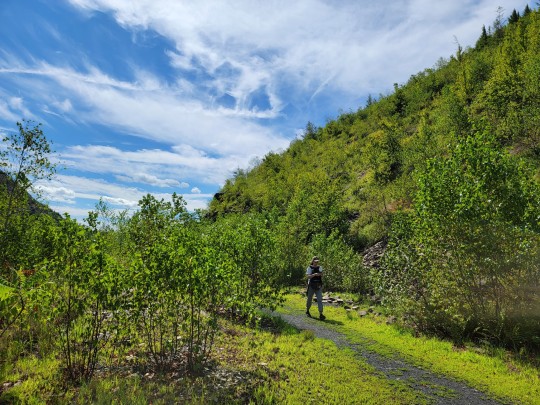
All this being said Quaking Aspen's large geographic range mirrors that of the last glacial maximum, implying a rapid spread onto retreating glaciers. This also suggests a growth habit requiring wet or moist soil conditions. This range is North West to Alaska nearly touching the Arctic Ocean at its Northern-most range in the Yukon, then east to Newfoundland; south west to Mexico (usually restricted to high mountains) and east from Iowa to New Jersey (with scattered populations in West Virginia).
Since Aspen often colonizes sites of former glaciation, with climate change it's predicted there will be a northward and uphill progression of populations. Aspen isn't really in intense danger of dissappearing but studies have shown major stressors (draught, extreme heat, over-grazing) cause higher mass-mortality events from minor stressors (typically disease and insect herbivorey). Given the fact that many forests are clonal there was a question of low genetic diversity amoung populations, yet interestingly, individuals undergo somatic mutations (DNA alterations after conception) and are extremely variable, so different individuals often place different energies into different defense tactics.
In addition to all of this information Aspens are primarily used today to make paper pulp. Historically settlers used aspen to derive quinine (think gin and tonic), and indigenous tribes have a history of using big trunks to create dug out canoes.
So please go out to your nearest mountain/boreal forest to enjoy the Quaking Aspen's lovely smooth bark and haunting shaking in the wind!
42 notes
·
View notes
Text

Un bosc de pollancres trèmols americans (Populus tremuloides). [font]
2 notes
·
View notes
Text

Do not despair! You are not without allies.
2 notes
·
View notes
Video
Ridges and Peaks of Mount Timpanogos by Mark Stevens Via Flickr: While at a roadside pullout along the Alpine Loop Drive with a view looking to the west to some distant ridges and peaks coming off Mount Timpanogos as part of the Central Wasatch Range.
#Aspen#Aspen Leaves#Aspen Trees#Aspens#Azimuth 247#Blue Skies with Clouds#Central Wasatch Range#Day 8#DxO PhotoLab 5 Edited#Evergreen Trees#Evergreens#Hillside of Trees#Landscape#Landscape - Scenery#Looking West#Mount Timpanogos#Mountain Landscape#Mountain Peak#Mountains#Mountains in Distance#Mountains off in Distance#Mountainside#Nature#Nikon D850#No People#Outside#Partly Cloudy#Partly Sunny#Populus tremuloides#Quakies
0 notes
Text
Not sure about age. but still breathtaking

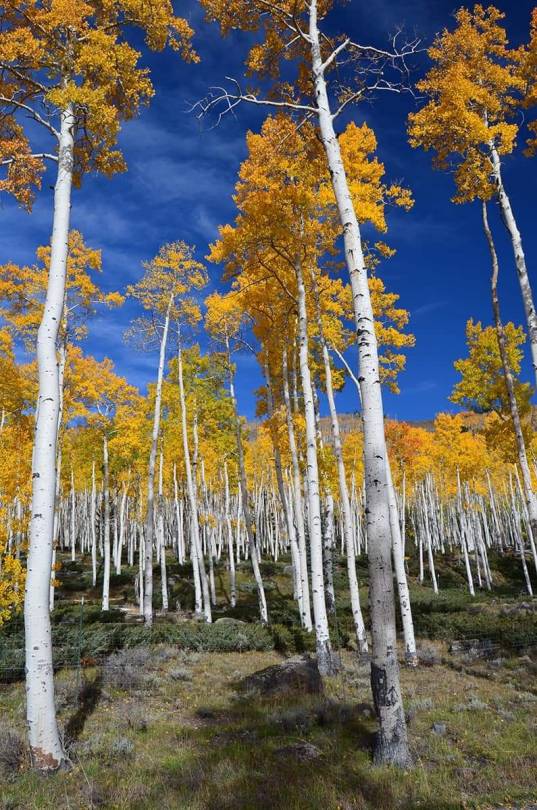
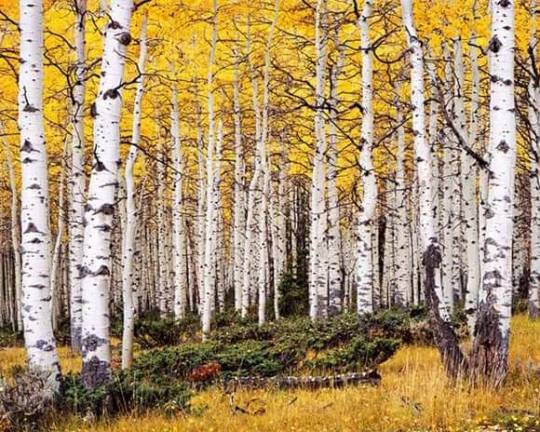
Meet Pando, not a forest but a single tree. Every trunk of the Quaking Aspen is genetically identical & connected by a single 80,000 year old root system, making it one of the largest and oldest living entities on Earth!
69K notes
·
View notes
Text



I’m going to reintroduce myself to the phandom via the Time Machine meetup hosted by @energeticwarrior !
My name is Clare (they/them). The first picture is me in 2012, back when I started watching Dan’s videos (I figured the picture with the llama was fitting). I found Phil shortly after and have watched them both ever since, but got in real deep between 2016 and 2018. I was pretty active then and had a tumblr blog that I can’t for the life of me remember the name of—followed a lot of familiar faces showing up today back then! And then there’s the me of today, hanging with my friend’s chihuahua and living my best queer life.
It’s actually unhinged that these two British dudes have been with me for over ten years. Freaks me out if I think about it for too long. But from the years when I was a depressed, closeted teen finding solace in Dan’s videos, to the phandom friends and support I found in 2016 when I finally came out, to this new renaissance where we’re all just old and gay and having fun, I’m so grateful for them and this community. Their content and the community that’s built around them has done so much to help me find myself and feel accepted along the way. It’s been fun seeing people pop back up on old blogs and new people discovering them for the first time.
I’m loving seeing all of the other people in this tag and reading about all our journeys! I’m proud of us all! 🏳️🌈
#heeeyyyyy#Time Machine meetup#dan and Phil#dnp#I follow and like from populus-tremuloides so if you see that in your notifs that’s mess
17 notes
·
View notes
Text
fuck- т дня:
Самая древняя живая вещь на Земле!
в США растёт колония осин под названием "Пандо", ей около 80 000 лет. известна также под названием «Трепещущий гигант», - The Trembling Gian., клональная колония тополя осинообразного (лат. Populus tremuloides), расположенная в штате Юта. Пандо считается единым живым организмом на основании идентичных генетических маркеров и общей корневой системы. «дерево» представляет собой единственный мужской экземпляр, размножающийся корневыми отпрысками. колония охватывает площадь, равную 43 га, вес растения оценивается в 6000 тонн, что делает его самым тяжёлым известным организмом.
22 notes
·
View notes
Text
Debby swept through the area on Friday. Yesterday, all that remained of the storm was a strong, steady breeze. Few things will connect you to nature more quickly than the wind riffling through aspen leaves. The quaking aspen (Populus tremuloides) in Canaan Valley is part of a disjunct population located well south of its normal northerly range. The high elevation of the valley allows species normally found much farther north to thrive here. Along the Middle Ridge Trail in the Canaan Valley National Wildlife Refuge.
#appalachia#vandalia#west virginia#summer#allegheny mountains#canaan valley#canaan valley national wildlife refuge#quaking aspen#trembling aspen#wind#leaves#middle ridge trail
32 notes
·
View notes
Text

Not big bee plants but Scouler’s willow is a host plant for over 350 various species of butterflies and moths. It’s also one of the only willows in western Wa (where I live) that can tolerate pretty dry conditions which is useful for urban and suburban gardeners who dont live near wetlands. red alder and aspens are also power houses as host plants for lepidoptera.




I am becoming obsessed with the flowers of wind-pollinated broadleaf PNW native trees.
I have four so far with a few more to capture.
1 - beaked filbert
2 - Scouler willow
3 - red alder
4 - aspen
Interestingly, aspen is not capitalized because the city is named after the tree not the other way around. Exactly the same reason ponderosa is not capitalized because the ranch was named after the tree not the tree after the ranch and because the ranch was fictitious and oh so many other reasons.
Lichen on!
17 notes
·
View notes
Text

The Pando aspen clone is "the largest known quaking aspen (Populus tremuloides) clone founded by a single seedling and thought to be one of the oldest studied organisms."
Analyses of its DNA could help in knowing "how ancient organisms protect their genomes from harmful mutations."
7 notes
·
View notes
Text

Quaking Aspen (Populus tremuloides) trees in autumn, Utah
Photo by Yva Momatiuk and John Eastcott
#aspen#quaking aspen#populus#populus tremuloides#trees#aspen trees#yellow#yellow trees#autumn#autumn trees#autumn colors#fall#fall colors#aspen in fall#forest#woods#tree photography#nature
38 notes
·
View notes
Text
В национальном лесу Фишлейк, штат Юта, есть роща осинообразных тополей (Populus tremuloides), которая занимает 43 гектара и содержит около 47000 на первый взгляд отдельных деревьев. Только они не совсем индивидуальны. Каждое из них произошло от побега, возникшего на корнях давно умершего оригинального дерева, и по мере того как каждый новый росток распространял свои собственные корни, на них появлялись новые ростки. Генетически идентичные, они все составляют одно дерево, и их корни связаны под землей. В мире оно известно как дерево Пандо, что по-латыни означает «я распространяюсь». Отдельные побеги живут примерно 150 лет, но некоторым корням около 80000 лет, хотя, вне всякого сомнения, прародитель намного старше.
(с) Майкл Аллаби. “Скандальная правда о сексуальной жизни растений”.

#цитата#проза#Аллаби#Майкл Аллаби#книга#книги#чтение#книжный блог#русский#русский блог#русский tumblr#русский пост#русский тамблер
17 notes
·
View notes
Text


#bosc#forest#tardor#tardorenc#daurat#primavera d'hivern#Populus tremuloides#pollancre#pollancre trèmol americà#arbre#arbres#èlfic
1 note
·
View note
Text
Pandofication
Below is a diagram detailing the four primary stages of a transformation referred to as Pandofication.
Very little quantitative data is currently available. The qualitative data suggests that Pandofication can remain dormant in a host body for an extended period of time before entering the metamorphosis stage. It is unknown how Pando spreads into its host bodies.
After close proximity to excessive heat and smoke, the host body begins an involuntary metamorphosis into the final stage of the Pando life cycle.

The following are the four primary stages of Pandofication.
Fig. 1-A.
Host begins to show visible changes. (Pandofication likely has progressed internally before this stage.) Outer extremities begin to whiten and take on a rough bark-like texture. As the Pandofication progresses, this whitening spreads inwards.
Cognition unaffected.
Fig. 1-B.
Blackened creases and other markings typical of Populus Tremuloides (Quaking Aspen) form across whitened areas. Host remains proportionally unaffected and anatomically correct.
Fig. 2
Host begins growth stage. Outer extremities are affected first, losing dexterity while rapidly becoming more root-like in structure.
Cognition impaired. Host becomes confused and disorientated. In humans, the host remains capable of (imperfect) speech, and basic reasoning. Host becomes highly avoidant of others of their kind.
At this stage the host can recognise and can choose to interact with familiar parties. Willing, non-avoidant interaction with unfamiliar parties is highly unlikely at this stage.
Host seeks an isolated location of a forest recently affected by wildfire where water and sunlight are in abundance.
Fig. 3
Host doubles to triples in height, significant growth in overall mass. Branches and foliage are now prominently growing across the host body. External soft tissue not altered by the Pandofication process decays and is discarded.
Cognition severely impaired.
Host no longer displays avoidant behaviors, instead becoming hostile when approached. Host no longer capable of communication or recognition. Exhibits “hunting” behavior, killing and gathering local fauna into a single area.
Fig. 4
Host becomes immobilized. Rooting into the earth around the collected kills, most likely acting as a form of fertilizer. The end result of the Pandofication process is a conjoined Quaking Aspen tree consisting of four trunks, previously limbs.
The Host selects an ideal location for Aspen tree growth and establishes itself firmly, becoming the center of a future Pando forest.
#Pando#horror comic#sort of#Aspen Kuk#my art#happy halloween#speculative biology#what if Pando operated like a parasitic wasp
7 notes
·
View notes
Video
To Walk Amongst the Aspens on a Springtime Day by Mark Stevens Via Flickr: While at a roadside pullout along the Alpine Loop Scenic Backway in the Uinta-Wasatch-Cache National Forest. The view is looking to the south-southeast at a nearby aspen forest. My thought on composing this image was to zoom in with the focal length and have that forest fill the image from edge to edge.
#Along Roadside#Alpine Loop Drive#Alpine Loop Scenic Backway#Aspen#Aspen Leaves#Aspen Trees#Aspens#Azimuth 152.60#Blue Skies with Clouds#Blues Skies with Clouds#Central Wasatch Range#Day 8#DxO PhotoLab 5 Edited#Forest#Forest Landscape#Hillside of Trees#Landscape#Landscape - Scenery#Looking SSE#Mountain Landscape#Nature#Nikon D850#No People#Outside#Partly Cloudy#Partly Sunny#Populus tremuloides#Quakies#Quaking Aspen#Roadside
0 notes
